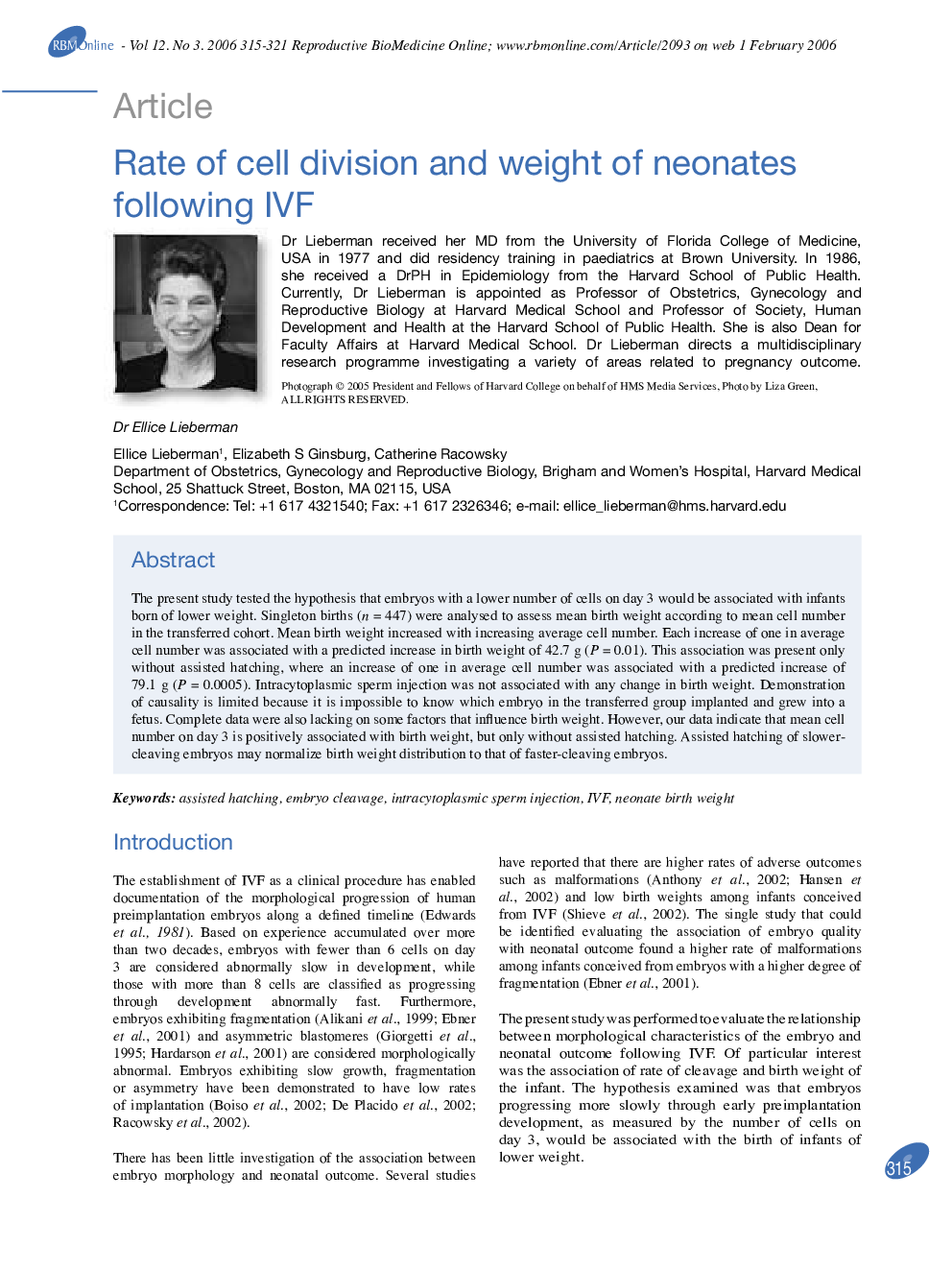| Article ID | Journal | Published Year | Pages | File Type |
|---|---|---|---|---|
| 3973561 | Reproductive BioMedicine Online | 2006 | 7 Pages |
The present study tested the hypothesis that embryos with a lower number of cells on day 3 would be associated with infants born of lower weight. Singleton births (n = 447) were analysed to assess mean birth weight according to mean cell number in the transferred cohort. Mean birth weight increased with increasing average cell number. Each increase of one in average cell number was associated with a predicted increase in birth weight of 42.7 g (P = 0.01). This association was present only without assisted hatching, where an increase of one in average cell number was associated with a predicted increase of 79.1 g (P = 0.0005). Intracytoplasmic sperm injection was not associated with any change in birth weight. Demonstration of causality is limited because it is impossible to know which embryo in the transferred group implanted and grew into a fetus. Complete data were also lacking on some factors that influence birth weight. However, our data indicate that mean cell number on day 3 is positively associated with birth weight, but only without assisted hatching. Assisted hatching of slower-cleaving embryos may normalize birth weight distribution to that of faster-cleaving embryos.
